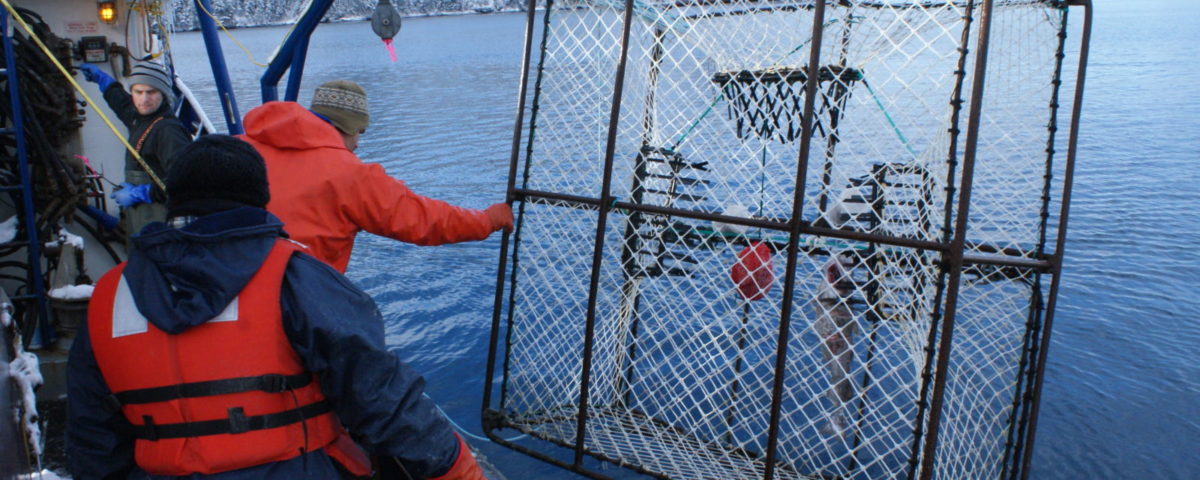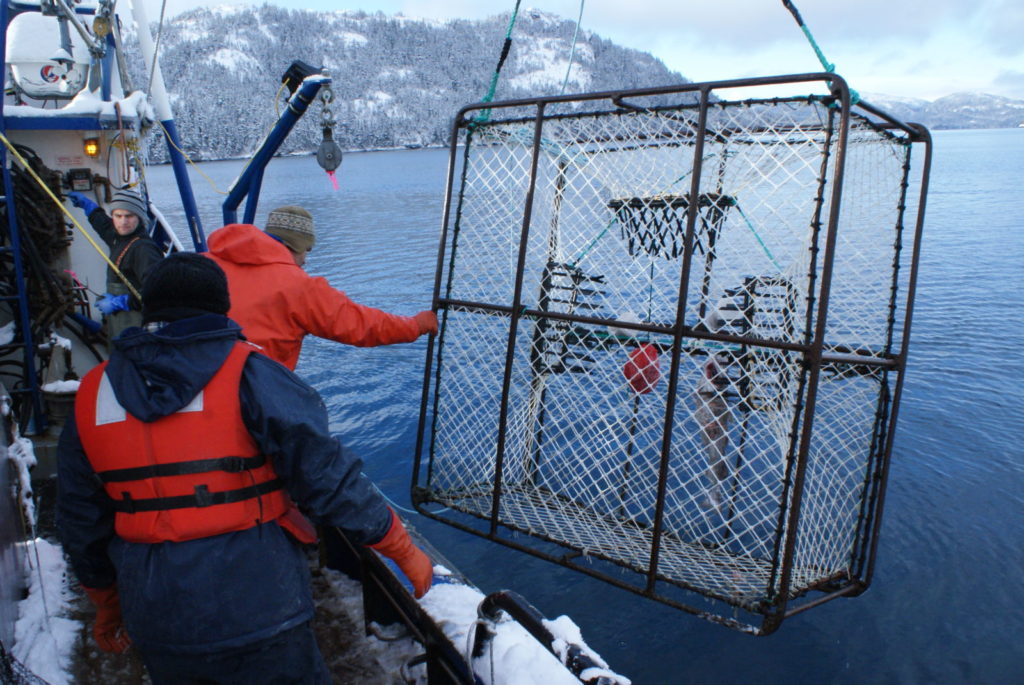Pacific Cod Migration

Tagging Research Produced Interesting Results
By Teal Barmore, February 25, 2019
Deep in the waters of Prince William Sound; large, light gray-brown fish with blotches and spots on their sides, live out their life turning forage fish, crab, shrimp, and other invertebrates into the desirable white meat that makes Pacific cod the second largest fishery in the United States. These Prince William Sound fish are managed by the Alaska Department of Fish and Game as part of the Gulf of Alaska stock. This management strategy assumes that, like Pacific cod studied in other places, these cod migrate seasonally in and out of Prince William Sound, sharing genetics and population dynamics with the Gulf stock. No genetic or tagging studies had been done in Prince William Sound to confirm this, and based on studies of similar fjord environments, Science Center researcher Dr. Mary Anne Bishop suspected that the Prince William Sound population of cod may not always behave as this management strategy suggests. In December 2013, Mary Anne started a tagging project that would change everything we thought we knew about the migrations of the western Prince William Sound Pacific cod population.
Between research cruises in December 2013 and February and December 2014, Mary Anne’s team captured and tagged 123 cod in two bays in western Prince William Sound. Each bay was equipped with two lines of underwater acoustic receivers at the entrances to collect data on the fish’s movement in and out of the bays. The existing Ocean Tracking Network—six acoustic arrays situated at the major entrances to Prince William Sound—were utilized to detect further movement between Prince William Sound and the Gulf of Alaska. What the researchers found was interesting. Of the 111 tagged fish that survived more than 10 days after tagging, only two of them were detected at the Ocean Tracking Network arrays at the entrances to the Gulf of Alaska. Most of the fish did not even leave the bays that they were tagged in!

Dr. Mary Anne Bishop’s research team brings in a ground fish pot containing a cod for tagging. The team used both pots and longlines to catch Pacific cod for the project.
Of the small percentage of fish that did leave the bays, Mary Anne and her team were able to make some interesting observations. First, there was a correlation in size. It was the bigger fish that were venturing out of the bays into the Sound and from the Sound out to the Gulf. Secondly, their movements appeared to be migratory. The larger fish left their home bays during the summer and returned in the winter, leaving again right after spawning in the spring. This kind of partial migration is not unprecedented in cod and could be due to lower energy costs for movement of larger fish, or diet changes.
Other work by Mary Anne has suggested that there may be differences in migratory behavior within the Sound’s cod population. In contrast to the evidence from the western Sound, a pilot study for tagging cod in the eastern Sound detected two of three tagged fish at the Ocean Tracking Network array at Hinchinbrook Entrance. Tagging more cod in the western Sound along with genetic research would help determine if there are subpopulations within the Sound that explains the different migration behavior. Mary Anne hopes that further down the road funding will be available to learn more about the Prince William Sound cod population.
Scientific results from this study were published in the November 2018 issue of Canadian Journal of Fisheries and Aquatic Sciences in a paper titled “Evaluating Pacific cod migratory behavior and site fidelity in a fjord environment using acoustic telemetry”




